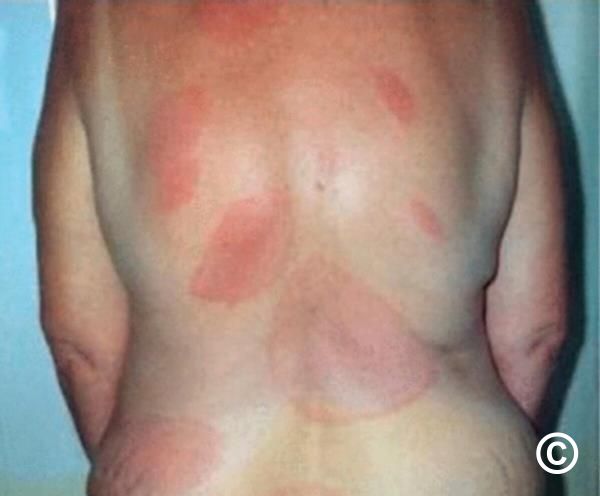Understanding the Objective of the Lymecare Alliance for Lyme Advocacy
Understanding the Objective of the Lymecare Alliance for Lyme Advocacy
Blog Article
Recognizing Lyme Illness-- Crucial Awareness for Prevention
Lyme disease continues to be a substantial public health and wellness concern, primarily sent with the bites of infected ticks, particularly in areas with thick vegetation. The very early recognition of Lyme condition is essential, yet many individuals stay uninformed of its symptoms or the atmospheres that present the highest threat.
What Is Lyme Disease?
If left untreated, Lyme illness can progress to much more severe stages, potentially influencing the joints, heart, and worried system. People might experience arthritis, neurological problems, or cardiac problems. The condition can be testing to identify, as its symptoms can imitate those of various other diseases. Analysis approaches normally involve a combination of clinical assessment and research laboratory testing, consisting of serological assays to identify antibodies versus Borrelia burgdorferi.
Timely recognition and treatment are essential in managing Lyme disease and avoiding complications, with early antibiotic treatment typically causing beneficial results.
How Lyme Disease Spreads
Lyme illness largely spreads through the bite of contaminated black-legged ticks, likewise referred to as deer ticks, which carry the bacterium Borrelia burgdorferi. These ticks are typically found in woody or verdant areas, often residing on bushes or reduced greenery. They call for a blood meal from a host, such as humans or animals, to prosper and reproduce.
Transmission typically occurs when ticks connect to the skin and stay for a long term duration, normally 24 to two days. The risk of infection enhances with the period of add-on, as the microorganism is transmitted from the tick's saliva right into the host's bloodstream. Ticks can be energetic during warmer months, particularly in springtime and summer, making outside tasks a potential risk for direct exposure.
While black-legged ticks are the key vectors, other species, such as the Western black-legged tick, can also transmit Lyme illness. It is necessary to be alert in areas where ticks are common. Preventative actions include using safety clothing, utilizing tick repellents, and conducting complete tick checks after outside activities to reduce the possibility of attacks and succeeding transmission of Lyme disease.
Signs And Symptoms and Medical Diagnosis
Identifying the symptoms of Lyme condition is essential for timely medical diagnosis and treatment, as early treatment can significantly influence recuperation. The most recognizable early sign is the erythema migrans breakout, which appears as a circular, red sore with a central cleaning, commonly looking like a "bull's- eye." This rash usually creates within 3 to 1 month after a tick bite and might be gone along with by flu-like signs such as fever, chills, tiredness, muscle mass pains, and headaches.

Medical diagnosis of Lyme disease mainly depends on scientific examination, considering the client's signs and prospective direct exposure to ticks in endemic areas. Laboratory tests, consisting of enzyme-linked immunosorbent assays (ELISA) adhered to by Western blot tests, can support the medical diagnosis but are not conclusive in early-stage Lyme condition. Prompt acknowledgment and medical diagnosis are important for initiating suitable antibiotic therapy, which is most reliable when administered early in the condition course.
Avoidance Techniques
Protecting against Lyme illness calls for a positive method, especially for people that spend time in locations where ticks are prevalent. In addition, tucking pants into socks and making use of tick-repellent items containing DEET or permethrin can considerably lower the danger of tick add-on.
On a regular basis evaluating oneself, youngsters, and animals for ticks after outdoor activities is crucial. Ticks needs to be immediately gotten rid of making use of fine-tipped tweezers, comprehending them as close to the skin's surface as feasible. It is recommended click this to bath within two hours of returning inside, as this can assist eliminate ticks prior to they attach.

Therapy Alternatives
Reliable monitoring of Lyme illness depends upon prompt and appropriate treatment alternatives, which largely entail antibiotic treatment. The selection of anti-biotics and the period of therapy normally rely on the stage of the condition and the seriousness of signs and symptoms. Early localized Lyme disease is typically treated with dental antibiotics such as doxycycline, amoxicillin, or cefuroxime axetil for a period of 10 to 21 days. This technique is generally efficient in removing the infection and preventing further problems. Lymecare Alliance.
In cases of very early shared Lyme illness, where neurological or heart signs and symptoms might arise, a longer course of oral antibiotics or intravenous prescription antibiotics may be required. For individuals experiencing relentless site here signs after first therapy, understood as Post-Treatment Lyme Disease Disorder (PTLDS), a much more complicated administration method may be needed. This can include a multidisciplinary technique, dealing with not just the physical signs and symptoms yet also emotional elements, as tiredness and cognitive troubles prevail.
It is important for people to participate in open interaction with their doctor to tailor therapy strategies to their details needs, ensuring the ideal possible results in the management of Lyme condition.
Conclusion
Lyme condition presents significant wellness risks mostly due to its transmission by means of infected black-legged ticks. Continued recognition and education and learning about Lyme disease are essential in mitigating its impact, therefore advertising healthier communities and protecting public wellness versus this pervasive tick-borne illness.
Lyme illness mostly spreads with the bite of infected black-legged ticks, also recognized as deer ticks, which bring the microorganism Borrelia burgdorferi. Lymecare Alliance.While black-legged ticks are the main vectors, other varieties, such as the Western black-legged tick, can also transfer Lyme illness. Preventative actions consist of wearing protective apparel, using tick repellents, and carrying out thorough tick checks after exterior tasks to lower the possibility of bites and subsequent transmission of Lyme condition
Diagnosis of Lyme disease primarily relies on professional examination, taking into account the individual's symptoms and potential direct exposure to ticks in native to the island areas.Lyme illness positions considerable health and wellness risks primarily due to its article transmission by means of contaminated black-legged ticks.
Report this page